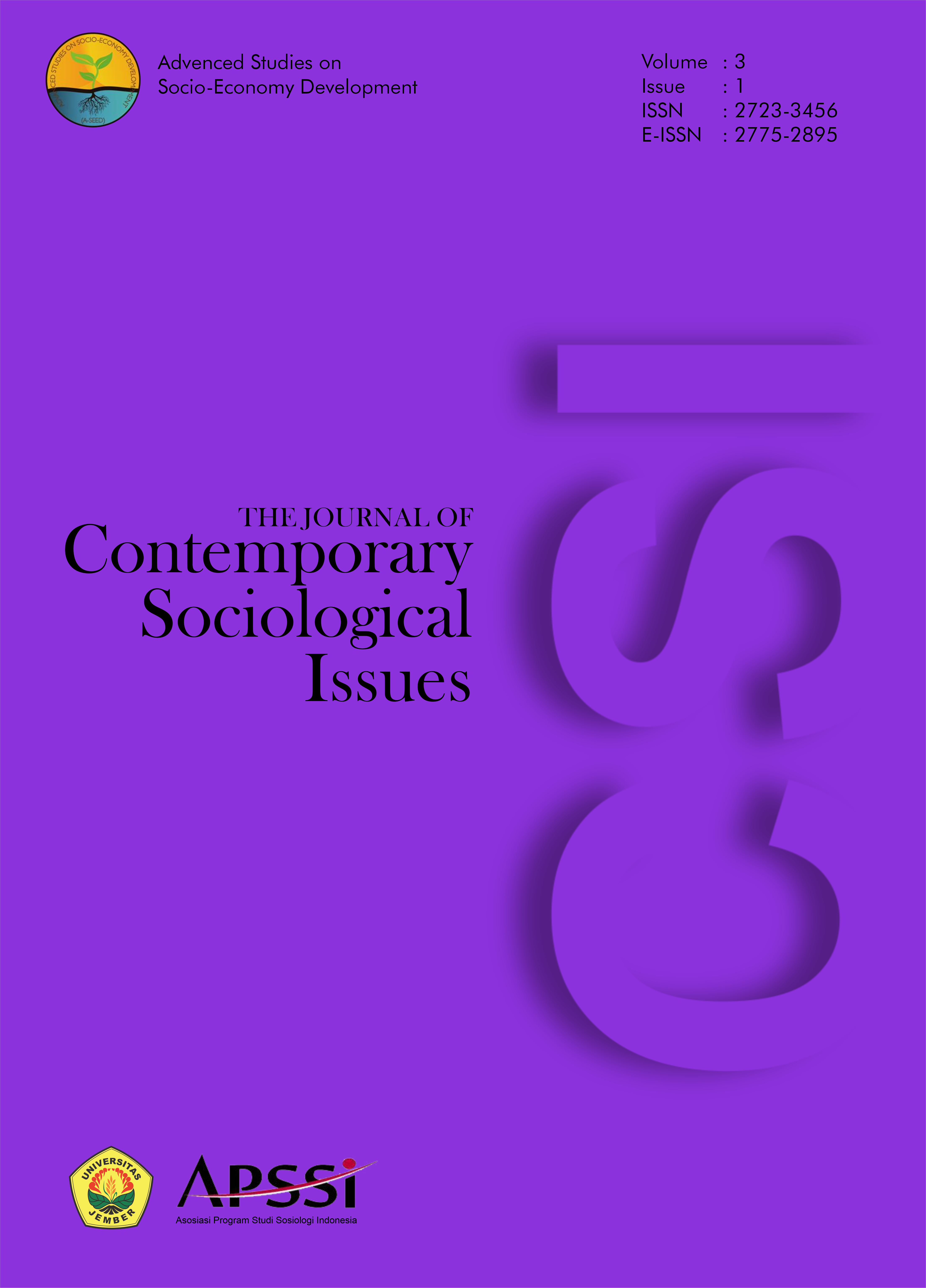Youth and Peacebuilding: Policy Implications of Conflict Resolution in Africa
DOI:
https://doi.org/10.19184/csi.v3i1.31263Keywords:
Conflict, Governance, Inclusion, Peacbuilding, YouthAbstract
Promoting sustainable peace is a major concern for world regions, especially one enmeshed in recurring conflict and violence, such as in Africa. Ethnoreligious conflicts, boundary disputes, genocide, resource-based conflicts, and youth restiveness characterize many African nations. This idea has been made intricate by a surge in the youth population, massive unemployment, limited education opportunities, and widespread poverty that makes youth key factors in the generation of conflict in Africa. Despite these challenges, the youth of many African nations have distinguished themselves as agents of peace and conflict resolution. On this premise, this article examines youth as agents of peace and reconciliation in Africa. The paper adopts a thematic approach within a qualitative framework and relies on secondary data from briefs, newspapers, conference papers, government reports, and peer-reviewed journal articles. The paper found that shifting focus from the stereotypical prejudice of youth as agents of conflict to agents of peace is instrumental to unlocking their potential as actors in Africa's peace process and conflict resolution. It was also found that youth promote peace and inclusion through advocacy and civic engagement. They use tools such as music, arts, sports, education, storytelling, and interfaith dialogue to build cohesion, resilience, peace, and trust in various parts of Africa. Resultantly, the article made practical policy recommendations such as the establishment of an African Youth Assembly (AYA), African Youth Parliaments (AYP), Youth Participation Commission (YPC), and Youth Empowerment Commission (YEC) – among others.
Keywords: Conflict, Governance, Inclusion, Peacebuilding, Youth
Downloads
References
Agbiboa, Daniel Egiegba. ‘Youth as Tactical Agents of Peacebuilding and Development in the Sahel’. Journal of Peacebuilding & Development 10, no. 3 (1 December 2015): 30–45.
Akinyetun, Tope Shola. ‘A Theoretical Assessment of Boko Haram Insurgency in Nigeria from Relative Deprivation and Frustration-Aggression Perspectives’. African Journal of Terrorism and Insurgency Research 1, no. 2 (2020): 89–109.
Amnesty International. ‘Sub-Saharan Africa: The Devastating Impact of Conflicts Compounded by COVID-19’, 2021. https://www.amnesty.org/en/latest/news/2021/04/subsaharan-africa-the-devastating-impact-of-conflicts-compounded/.
Babbitt, Eileen. ‘Conflict Resolution and Human Rights in Peacebuilding: Exploring the Tensions’. United Nations, 2009. https://www.un.org/en/chronicle/article/conflict-resolution-and-human-rights-peacebuilding-exploring-tensions.
Boutros-Ghali, B. ‘An Agenda for Peace: Preventive Diplomacy, Peace-Making and Peacekeeping’. New York: United Nations, 1992. https://www.un.org/en/sc/repertoire/89-92/Chapter%208/GENERAL%20ISSUES/Item%2029_Agenda%20for%20peace_.pdf.
Chandran, Rahul. ‘Conceptual Issues in Peacebuilding’. United Nations University Centre for Policy Research, 2015. https://collections.unu.edu/eserv/UNU:3219/unu_cpr_conceptual_issues.pdf.
Cirhigiri, Christian Cito. ‘Youth and Peacebuilding: Key Insights and Lessons from a Global Online Consultation’. Peace Direct, 2019. https://s3.eu-central-1.amazonaws.com/peace-insight/wp-content/uploads/P889%20PD%20Youth%20LVP%20Report_V5.pdf.
Department for International Development-Civil Society Organization. ‘Youth Participation in Development: A Guide for Development Agencies and Policy Makers’. London: Youth Working Group, 2010.
Ismail, Olawale, and Funmi Olonisakin. ‘Why Do Youth Participate in Violence in Africa? A Review of Evidence’. Conflict, Security & Development 21, no. 3 (4 May 2021): 371–99.
Jarstad, Anna, Niklas Eklund, Patrik Johansson, Elisabeth Olivius, Abrak Saati, Dzenan Sahovic, Johanna Söderström, Malin E Wimelius, and Malin Åkebo. ‘Three Approaches to Peace: A Framework for Describing and Exploring Varieties of Peace’. Umeå Working Papers in Peace and Conflict Studies, no. 12 (2019). https://www.diva-portal.org/smash/get/diva2:1375816/FULLTEXT02.pdf.
Krug, Etienne G., James A. Mercy, Linda L. Dahlberg, and Anthony B. Zwi. ‘World Report on Violence and Health’. Geneva: World Health Organization, 5 October 2002.
Liaga, Emmaculate Asige. ‘Towards Local Approaches and Inclusive Peacebuilding in South Sudan’. Resolve Network Policy Note, 26 October 2021.
Murray, Laura K., Judith A. Cohen, and Anthony P. Mannarino. ‘Trauma-Focused Cognitive Behavioral Therapy for Youth Who Experience Continuous Traumatic Exposure’. Peace and Conflict: Journal of Peace Psychology 19, no. 2 (2013): 180–95.
Ndegwa, Loise. ‘The Role Of Youth In Peace And Conflict In Africa’. The Organization for World Peace (blog), 2018. https://theowp.org/reports/the-role-of-youth-in-peace-and-conflict-in-africa/.
Nesterova, Yulia, and Asli Ozcelik. ‘Youth Has a Key Role in Peace Processes’. Impakter (blog), 2021. https://impakter.com/youth-role-peace-processes/.
Onuoha, Freedom. ‘Why Do Youth Join Boko Haram?’ United States Institute of Peace (USIP) Special Report, 2014. http://www.usip.org/publications/why-do-youth-join-boko-haram.
Osiemo, Isabella, Florence Maranga, and Ruthie Chepkoech Rono. ‘Situating the Role of Youth in Indigenous African Peacebuilding Interventions: The Question of Spoilers versus Menders’. AJCR 2021/1, 2021.
https://www.accord.org.za/ajcr-issues/situating-the-role-of-youth-in-indigenous-african-peacebuilding-interventions-the-question-of-spoilers-versus-menders/.
Perlotto, Sydney. ‘Africa’s Future: Youth and the Data Defining Their Lives. Status of African Youth Report’. African Union, 2019.
PSC Insights. ‘African Conflicts to Watch in 2022. PSC Report’, 2021. https://issafrica.org/pscreport/psc-insights/african-conflicts-to-watch-in-2022.
Rocca, Camilla, and Ines Schultes. ‘Africa’s Youth: Action Needed Now to Support the Continent’s Greatest Asset’. Mo Ibrahim Foundation, 2021. https://mo.ibrahim.foundation/sites/default/files/2020-08/international-youth-day-research-brief.pdf.
Rogan, J. ‘Young People’s Participation in Peacebuilding: A Practice Note’, 2016. https://www.youth4peace.info/system/files/2016-10/PRACTICE%20NOTE%20-%20Young%20People%27s%20Participation%20in%20Peacebuilding%20%282016%29.pdf.
SIPRI. ‘Armed Conflict and Peace Processes in Sub-Saharan Africa.’ Sweden: Oxford University Press, 2020.
UNDP. ‘Youth and Violent Conflict: Society and Development in Crisis?’ New York: UNDP, 2006.
UNESCO. ‘Africa: Sources and Resources for a Culture of Peace. Retrieved From’, 2013. http://www.unesco.org/africa4peace.
United Nations. 70/262 Review of the United Nations peacebuilding architecture. United Nations A/RES/70/262 (2016). https://documents-dds-ny.un.org/doc/UNDOC/GEN/N16/119/39/PDF/N1611939.pdf?OpenElement.
———. Culture of peace. United Nations A/RES/52/13 (1997). http://www.un-documents.net/a52r13.htm.
———. ‘Goal 16: Promote Just, Peaceful and Inclusive Societies’. United Nations, 2020. https://www.un.org/sustainabledevelopment/peace-justice/.
———. Resolution 2250.United Nations S/RES/2250 (2015). https://documents-dds-ny.un.org/doc/UNDOC/GEN/N15/413/06/PDF/N1541306.pdf?OpenElement.
———. Resolution 2419. United Nations S/RES/2419 (2018). https://documents-dds-ny.un.org/doc/UNDOC/GEN/N18/173/81/PDF/N1817381.pdf?OpenElement.
———. Resolution 2535. United Nations S/RES/2535 (2020). https://documents-dds-ny.un.org/doc/UNDOC/GEN/N20/182/94/PDF/N2018294.pdf?OpenElement.
———. ‘Resources on Youth, Peace and Security.’ United Nations, 2017. https://www.un.org/development/desa/youth/international-youth-day-2017/resources-on-youth-peace-and-security.html.
———. ‘United Nations Charter, Chapter IX: International Economic and Social Cooperation’. United Nations, n.d. https://www.un.org/en/about-us/un-charter/chapter-9.
Urdal, Henrik. ‘A Clash of Generations? Youth Bulges and Political Violence’. International Studies Quarterly 50, no. 3 (2006): 607–29.
———. The Devil in the Demographics: The Effect of Youth Bulges on Domestic Armed Conflict, 1950-2000. Social Development Papers, No. 14. Washington, DC: Conflict Prevention & Reconstruction, 2004.
World Bank. ‘World Development Report 2007’. Washington, D. C: World Bank, 2007.



